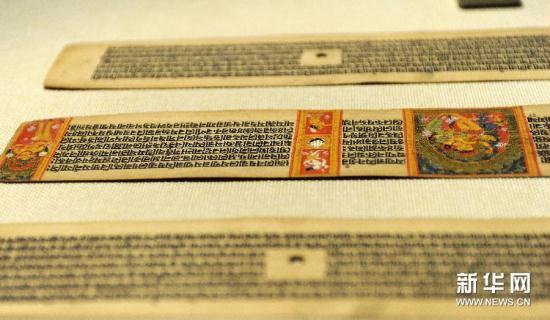 |
|
Since 2006, the Chinese Academy of Social Sciences, the China Tibetology Research Center and the government of the Tibet Autonomous Region have joined hands to protect pattra-leaf scriptures.
|
LHASA, May 26 (Xinhua) -- Cultural authorities have trumpeted China's investment in protecting intangible cultural heritage in Tibet Autonomous Region following the release of a white paper claiming Tibet's religion and traditional customs are protected.
Over the past nine years, China's central government and the government of Tibet have jointly invested 127 million yuan (20.58 million U.S. dollars) in preserving cultural heritage in Tibet, said Ren Shuqiong, deputy head of Tibet Regional Cultural Department, on Monday.
Ren said more than 100,000 articles, nearly 2,000 audio and video clips and 45,000 pictures have been collected since Tibet started a census on intangible cultural heritage in 2006.
Over 1,000 forms of intangible cultural heritage, including traditional music, dance, craftsmanship as well as traditional medicine and folkways, have been recorded in the census.
Thanks to the preservation efforts, Tibetan opera and "The Epic of King Gesar" have been listed as World Intangible Cultural Heritage items by UNESCO, while 76 other items are recognized as national-class intangible cultural heritage.
The cultural legacies of Tibet have been effectively protected, and the local religion and traditional customs and social mores are respected, according to "Progress in China's Human Rights in 2013," a white paper issued by the Information Office of the State Council on Monday.
We recommend:
